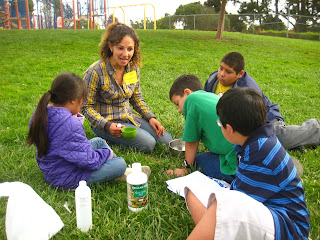
Howdy all!
After working and camping on a lovely organic farm called "The Garden of..." in Los Olivos with our friend Noey, we've had some time to reflect on where our food comes from. Many people are currently aware that the organic movement is growing not only due to health issues related to pesticides and other industrial farming methods, but also the ecological impacts that the large-scale commercial farming industry has on our planet--both locally and globally. Buying fresh organic produce from community farmer's markets is a rising trend, and the demand for responsibly grown food is becoming the norm.
But what about our fish?
Many people fail to question where our aqueous protein diet even originates. Did you know that 30% of the fish consumed in the U.S. is raised in fish farms? Many of which destroy the surrounding natural habitat through waste production that results in ecological "dead zones." Not to mention the spread of disease and occasional release of invasive species into wild fisheries. Ironically, some carnivorous fish raised in farms, such as salmon, are fed a vast amount of wild-caught seafood. This practice is a double-edged sword that depletes the ocean's resources in order to sustain an industry which can have disastrous environmental impacts.
(*Not all farmed fish are bad; check out or download a
Seafood Watch Guide to see which types to avoid and which are better wild-caught*)
High levels of mercury and other contaminants that bioaccumulate in a fish's fatty tissue

and biomagnify up trophic levels also concern public health. The hazards of by-catch and over-fishing due to our species's insatiable consumption are threatening all the world's oceans and fisheries at breakneck speed. It seems all hope is lost. But do not despair!
Luckily our species is a clever one, and we have actually had a solution to these problems for centuries. The Chinese have raised fish within their rice paddies to provide nutrients for crops since ancient times. The plants absorb the fish waste as nutrients--essentially filtering the water for the fish, thus creating a closed loop system similar to symbiotic relationships we see all the time in nature. Humans have recently been harnessing this mutualism in a process called "aquaponics"-- the sustainable combination of aquaculture and hydroponics. Simply put: raising fish and food crops together!
This traditional practice has received a modern upgrade and is currently being employed in many countries to produce sustainably-raised fish and produce in a fraction of the space that each industry alone would require. From an agricultural standpoint, this means: less toxic runoff, less erosion, less soil degradation, less water use and a multitude of other benefits. Instead, crops are raised using the same water that cycles through the fish tank below.
And many downsides of fish farming have been eliminated. The harmful byproducts (ammonia and nitrites) are not only contained but actually used as a resource when converted to nitrates by naturally occurring bacteria. The nitrates are a natural fertilizer for the plants being raised above the fish. Most aquaponics systems are above-ground fresh water designs, so the risk of harm to native populations and natural habitats is diminished.
Our hearty team of volunteer cyclist educators has been traveling with a demonstration
aquaponics system that was designed by a wonderful group of people at
Eden Aquaponics, based out of San Diego, CA. We teach a workshop at schools that highlights the advantages of this dual-farming method and showcases our star tilapia, whom we've lovingly named Fussilli. (And don't worry--he's become part of our family; we don't plan on eating him.)
*Check out the
Eden Aquaponics website for more information about their systems and what you can grow!
**For more information on sustainable seafood and how you can help protect our oceans, visit the
Monterrey Bay Aquarium website.
Psssst! Seafood Watch cards make a great stocking stuffer!! You can order them for
FREE!
Life is the bubbles,
Fussilli and Nicole
 Howdy all!
Howdy all!






























